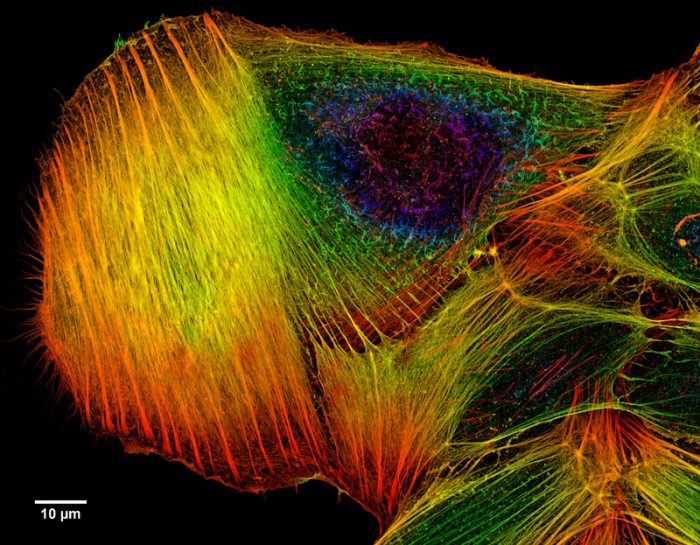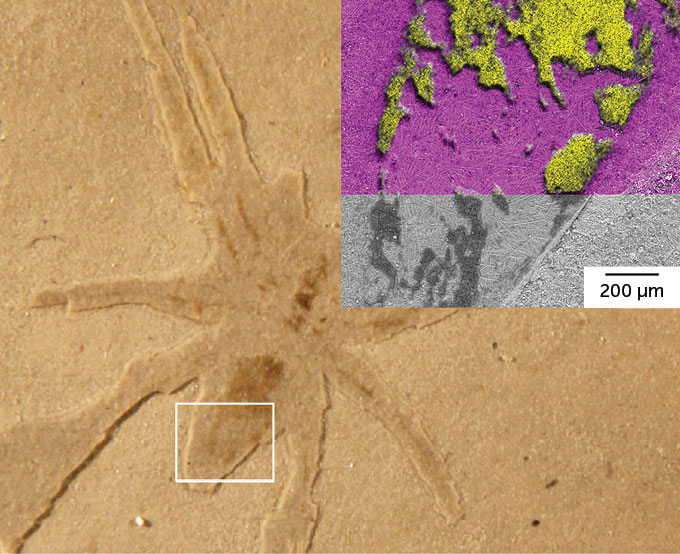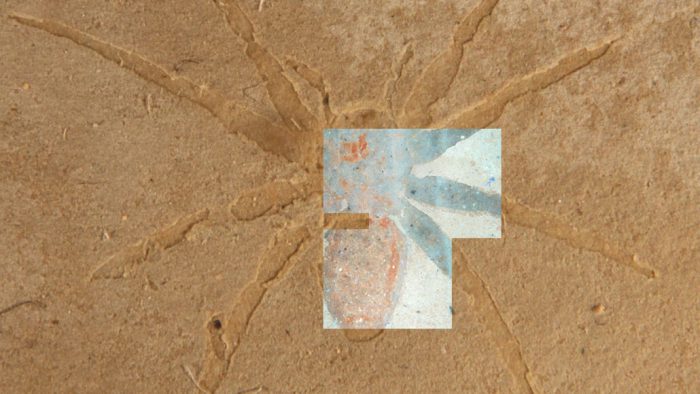May 7 to 22 is Science Odyssey, a celebration of all things science! OWLconnected is recognizing this two-week event with lots of science content, as well as with an amazing contest, presented by our friends at the Natural Sciences and Engineering Research Council of Canada (NSERC). Details are at the end of this post—be sure to enter!
Rare, even for fossils!
We've written a lot about just how difficult fossils are to create. (And if you'd like a refresher, watch our video here about just that!)
But despite being difficult to make, there is no single way to make a fossil. And sometimes, scientists get treated to a truly surprising specimen that rewrites the rules a little.
Case in point, remarkable 22-million-year-old spider fossils found in France that glow!
Wait, it glows?

This image of a cell shows the full power of a fluorescence microscope. Scientists will often inject fluorescent dyes into cells to be able to see certain parts of them more clearly. (Wikimedia Commons)
Okay, time for a small detail. No, the fossils don't just glow under normal light. But under a fluorescence microscope, parts of the spider fossils bloomed in a radiant yellow. It was like someone had coloured them in with a highlighter!
A fluorescence microscope is a device that is designed to view objects that are fluorescent—this is something that has absorbed light energy, which it can then radiate back out. This 'glowing' is not always something that we can see because our own spectrum of visible light is pretty narrow. In other words, humans can't see it, though certain other animals might be able to.
But under certain light, that glowing can be highlighted in a way that we can appreciate. (For an example of an animal with fluorescence that we can't see, check this story that we did on puffin beaks a while back.)
Gifted with a glow

Under this view, you can really see the sulphur biopolymer in the fossil. Compare that with the fossil under normal light, which looks dull and brown. (A. Olcott)
Many animals are fluorescent in some way, but the spiders that died 22 million years ago were not. So why are their fossils glowing like this?
The key is a biopolymer—a natural substance made of very large, complex molecules—that the spider bodies were covered in shortly after they died. To the researchers, it just looked as though the fossils were smeared with a dark, tarry substance. Imagine their surprise when under the microscope it glowed!
The experts believe that the biopolymer was likely a sticky goo secreted by ancient microalgae. After the spider died and were floating in water, they were covered by this odd goo. This stuff did two things.
First, it was heavy in sulphur, an element that helped to 'pickle', or preserve, the spiders' bodies. The sulphur reacts well with the carbon in the animal's exoskeleton, making them better candidates for fossilization. And second, it made those fossils fluorescent—even 22 million years after they were made!
It's an amazing recipe that was kind of only found by accident—the geologist who made the discovery, Alison Olcott at the University of Kansas, only dug deeper into this fossil because the pandemic gave her some extra time in between digs. Who knows what other fossils might reveal something similar under the right light?
Contest alert
Don't forget to enter the Science Odyssey Contest! CLICK HERE TO ENTER.

 Under a particular microscope, certain parts of these spider fossils gleam and glow. (A. Olcott)
Under a particular microscope, certain parts of these spider fossils gleam and glow. (A. Olcott)









